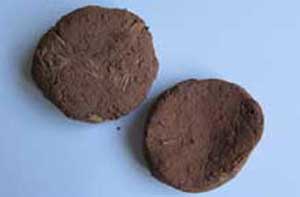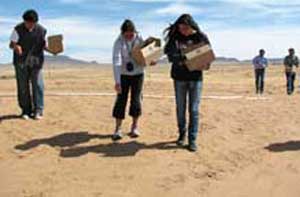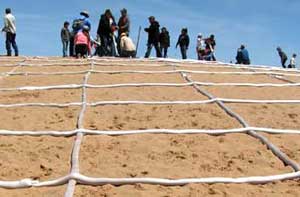Sand Dunes
Sand Dune Stabilization
U.S. Geological Survey staff scientists have partnered with EEOP to apply dune stabilization treatments in the Teesto, Arizona
area. The two main treatments that are currently being employed are native seed broadcasting and wind erosion buffering.
Importantly, these techniques are currently in the experimental phase. The group is constantly monitoring and assessing
the site to modify the stabilization design.
Treatment 1:
Native seed broadcasting is conducted using "seed cakes". Seed cakes are
made using a combination of compost, terra cotta clay, and native seed species including sporobolus cryptandrus (sand
dropseed), oryzopsis hymenoides (Indian ricegrass), and hilaria jamesii (galleta viva). Encasing the seeds in heavier
material (compost/clay blend).


